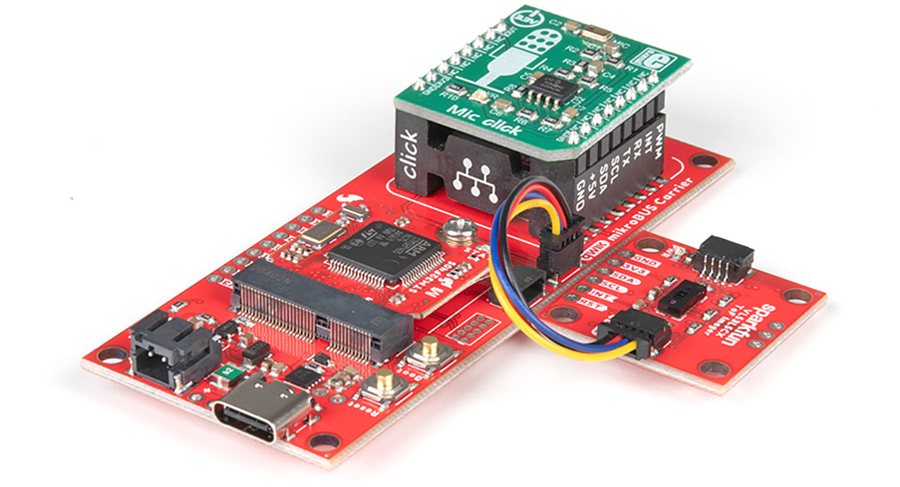The RP2040 and MicroMod carrier boards from SparkFun adapt to support various prototyping setups.
SparkFun today announced the release of two new carrier boards that may be built in literally millions of hardware combinations. The RP2040 mikroBUSTM Development Board has an RP2040 processor, whilst the MicroMod mikroBUSTM Carrier Board enables users to swap between MircoMod processing modules as needed.
The system now has an STM32 processing module, but the lineup will grow to include the SAM D51 processor, nRF52840, and RP2040. Each is connected by a row of conductor pads and is secured with a screw. This MicroMod carrier arrangement is meant to make the wrong insertion difficult.
Both boards also have a mikroBUSTM port for add-on components. This means that everything from MP3 playback modules to accelerometers and much more may be safely pressed into position.
The dedicated RP2040 board includes a single Qwiic connection port for further expansion. The MircoMod board is (even) more adaptable, with one horizontal and one vertical connection for simple I2C extension.
Each board has a USB-C power and programming connector, as well as JTAG interfaces. These boards may be utilized without a power supply thanks to a battery connector and charging circuit. All of these factors add up to a ready-made ecosystem that allows for extensive experimentation without the need of a soldering iron. Simultaneously, through-hole connections are accessible on the board's body if required.
A computer will detect the RP2040 board as a UF2 USB drive for programming, and programming the MicroMod board will depend on the module used. That being said, if you're utilizing any of these boards, there's a lot of knowledge to learn in order to work with them effectively.
The amount of information involved, as well as the required yak shaving, may be intimidating, especially for those new to microcontrollers, as you're dealing with a number of distinct ecosystems.
Aside from that caution, if you're a more sophisticated user, these boards might be a terrific method to quickly test and optimize alternative hardware combinations. It's difficult to envision a more versatile carrier board layout unless you do a lot of soldering and/or build the circuit board yourself!
Official Page : MicroMod




















0 Comments